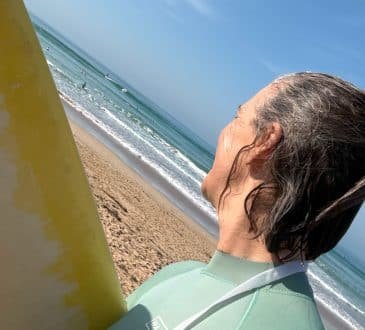How to retire in just 10 years through commercial property

A few years ago, I realised that I was hitting a ‘yield ceiling’ with residential property and that the highest cash-flow in Australian real-estate was locked away in commercial property. As comfortable as many Australians are with investing in residential, the reality is, it’s not enough to retire on. As uncomfortable as some of us are with commercial property investing, the reality is that it’s not difficult, it’s just different to residential. It’s imperative to have commercial in your portfolio if your goal is to generate a workable passive income for an early retirement. So, let’s take a look at how you can retire in just 10 years with commercial.
‘Rethinking’ Property Investing.
If you owned three residential properties worth $700,000 each, and they were all completely paid off, you would have $2.1m worth of property assets. Sounds great, right? However, at a 4% gross yield, your income on your debt-free property would only be about $60,000 per annum after council rates and water bills, insurance and maintenance costs have been taken into consideration. You would also need to factor in income tax that would be payable on your $60k rental income.
For a portfolio worth $2.1m with no debt, $60,000 in gross pre-tax income just doesn’t cut it I’m afraid!
So what if instead, you invested $2.1m in commercial property offering a 7.5% net return. With the tenant picking up many of the ongoing costs, such as council rates and maintenance, this investment would pay you $157,500 per annum after costs. Of course, income tax is still payable on these profits, but if you’re comparing commercial with residential returns over the long term, there’s a clear winner here. It’s a no-brainer, right?
These are big numbers I’m talking about here, but there are a lot of opportunities to buy a commercial property at a lower price point and with a good-quality tenant in place. People often think commercial is a highly expensive asset class that requires millions of dollars to get into, but the reality is that you can find a commercial property in a capital city for $350,000 – or sometimes even less.
With a good tenant in the property, a longer-term lease than residential, and cash flow that is much better than residential returns in the current market, investors are increasingly looking to commercial opportunities. A 7% net yield on a property priced between $300,000 and $400,000 can deliver hundreds of dollars per week in positively geared cash flow.
The numbers don’t lie.
The fact is that commercial property is currently garnering the highest yields we’ve seen in Australian real estate in almost a decade. We’re not buying with the ‘hope’ that our residential property will increase in value over the next 30 years. In lots of ways there’s far more control with commercial property – you do the numbers and only purchase a high quality commercial asset. Knowing that you’ve bought in a strong asset class, with a solid tenant, in a building which is highly re-lettable and in a great location, creates certainty, because these things all equal uninterrupted rental income. And this is what we want and it also takes the guesswork out, much of what residential property can often be. When we buy a high grade commercial asset for instance, we know that a $700K purchase, with a 70% debt, an initial deposit of $235K, a 5% loan rate and an 8% yield will garner a passive income of $65K after the property is paid off. And that’s just after ten years (increasing each year with a 1.5% rent increase). That’s money directly into your pocket until you decide to sell.
A strong debt reduction strategy.
By using the high net incomes from our commercial property’s rent to pay down the loan, we’re able to pay our debt down to zero in half the time of a standard 30-year loan contract – sometimes even sooner. And this is how high-yielding commercial property can pay itself off in 10 to 12 years.
The high cash-flow from the net commercial lease can be so strong, that if you can put the surplus rent back into your mortgage or offset account, the debt will rapidly reduce, without you having to make any extra payments. If you have a strong lease in place, you’ll also benefit from the built-in annual rent rises, which will help you pay off the property even faster each year.
Written by Scott O’Neill. Have you read?
Best Hospitality And Hotel Management Schools In The World For 2021.
Best Fashion Schools In The World For 2021.
Best Business Schools In The World For 2021.
Best Medical Schools In The World For 2021.
Follow CEOWORLD magazine on Facebook, Twitter, Instagram, and LinkedIn.
Bring the best of the CEOWORLD magazine's global journalism to audiences in the United States and around the world. - Add CEOWORLD magazine to your Google News feed.
Follow CEOWORLD magazine headlines on: Google News, LinkedIn, Twitter, and Facebook.
Copyright 2025 The CEOWORLD magazine. All rights reserved. This material (and any extract from it) must not be copied, redistributed or placed on any website, without CEOWORLD magazine' prior written consent. For media queries, please contact: info@ceoworld.biz











